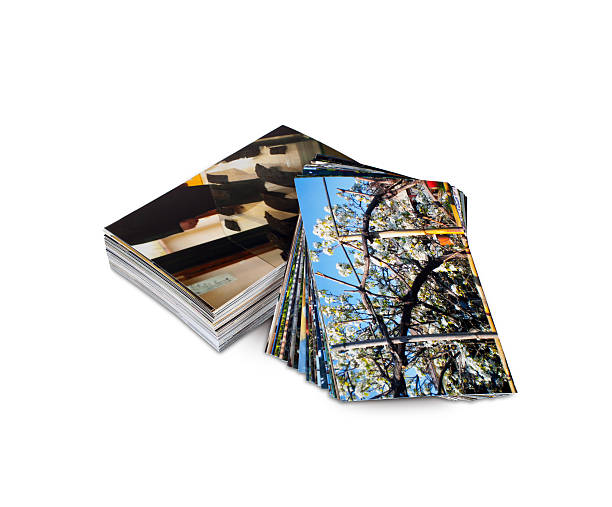How To Choose The Best Fine Art Paper To Print Prints

There are numerous substrate options to choose from so it's not surprising that customers often ask us "Which paper should I purchase?"
Of course, when choosing the right paper, the individual's preference is crucial. It all depends on the appearance and feel you'd like to create with your print. This guide will assist you in understanding the terminology and important characteristics of the paper you choose to make the most suitable choice for printing.
Paper forms
The first thing to do. Paper Types.
At JardenePhotography We provide three main paper types across our photography and fine art prints.
Alpha-Cellulose Papers
Alpha-cellulose, a wood pulp made from trees, is of high-quality. These matte papers are refined to eliminate the acidity and lignin. The paper is typically used for fine art prints. It's usually cheaper and has a sturdier feel as compared to cotton rag. Alpha-cellulose provides a sturdy robust and long-lasting paper.
Cotton Rag Papers
The cotton rag papers are typically more expensive with a great strength and endurance. It can be made from cotton linters, cotton rags or a combination of both. These are ideal for fine art reproductions because they resemble the original piece. They can also add an incredible depth and character to photographic prints.
RC Photo Papers
RC also known as 'resin coated' papers traditionally refers to wet processed photographs. Laminate was utilized to speed up processing times in the past. RC nowadays extends to inkjet photo papers. In this case alpha cellulose-based papers are encased in polyethene-based plastics, and are typically coated with microporous inkjet receptive emulsion. They can be coated with glossy, satin, lustre or pearl surfaces and are fairly resistant to scuffs. We also have metallic coated papers that included a multi-laminate basis that provides sturdy prints. The metallic coating gives the paper a a 3D appearance and accurately reproduces flesh tones.
Weight
The standard unit for paper weight is gsm which stands for grams per square meters. The weight of paper isn't something to worry about too much. All our photo and fine art papers can be used for professional printing.
Artists prefer heavier papers because they have more rigidity and feel more solid. It is much easier to frame larger prints Astotin Lake, if you use a heavier grams.
A guide to the gsm levels:
60-100gsm is typical for printing paper that is used for household use. This is the amount you'd expect to feel on an average A4 piece of print paper.
110-140gsm is the weight typical of the majority of traditional poster paper. It is strong enough to withstand some wear and tear, but thin enough to be suitable for fine prints of art. Think about flyers and posters.
170-200gsm is a heavier and sturdy paper. We suggest this minimal GSM for fine art prints.
A weight of 210-300gsm is typically the one for a more premium Fine art paper. It's a bit more similar to card, with an enveloping feel, but has a slight bend.
A thicker card-like material is between 310 and 400gsm. It is what you'd choose for wedding invitations as well as greeting cards. The highest gsm we offer on our fine art papers is 315gsm. This is for a high-quality, heavyweight paper that offers the feel and look of original artwork.
Texture
Again, it is dependent on individual preference with regard to the surface of the substratum.
But, it's important to consider the way you will display the print Astotin lake will be displayed, as well as where it will be displayed. Smoothly textured papers look better when viewed through glass than heavily textured papers. Smooth papers can give excellent contrast and depth.
Images with more texture feel better when touched and also enhance the image's depth and authenticity. Certain types of textures are suitable to certain types of art reproductions. Our Cold Press Watercolour Paper, for instance is the same texture and feel as etching papers.
Final
Although it may sound repetitive, selecting the paper's finish is an artistic choice. However, there are a few aspects to consider for each finish.
There are a few options...
Matte
All our fine art papers are matte-finished. Matte finish papers offer a smooth and natural looking surface, without the shine that is characteristic of glossy paper. Even matte papers that are described as "smooth" will still have a slight grainy texture when compared to gloss papers.
Matte finishes can be utilized to emphasize different tones and colors. it also gives art reproductions a more authentic look. It is typically used for black-and-white photography.
The most common option if your Astotin lake print is placed in glass because there is no reflection. This can make prints appear dull or grainy, and can cause colours to not be as vivid.
Glossy
Glossy paper generally has a reflective, smooth surface that is coated with resin. Glossy finishes can be utilized to increase contrast, clarity and vivid colour in your photos. You can see every detail in pin-sharp clarity due to the smooth, shiny surface.
For posters and consumer photos glossy paper is very sought-after. Be aware that glossy papers may create glare when viewed from certain angles. It also has less resistance to fingerprints than matte papers which could be a concern if your print will be handled.